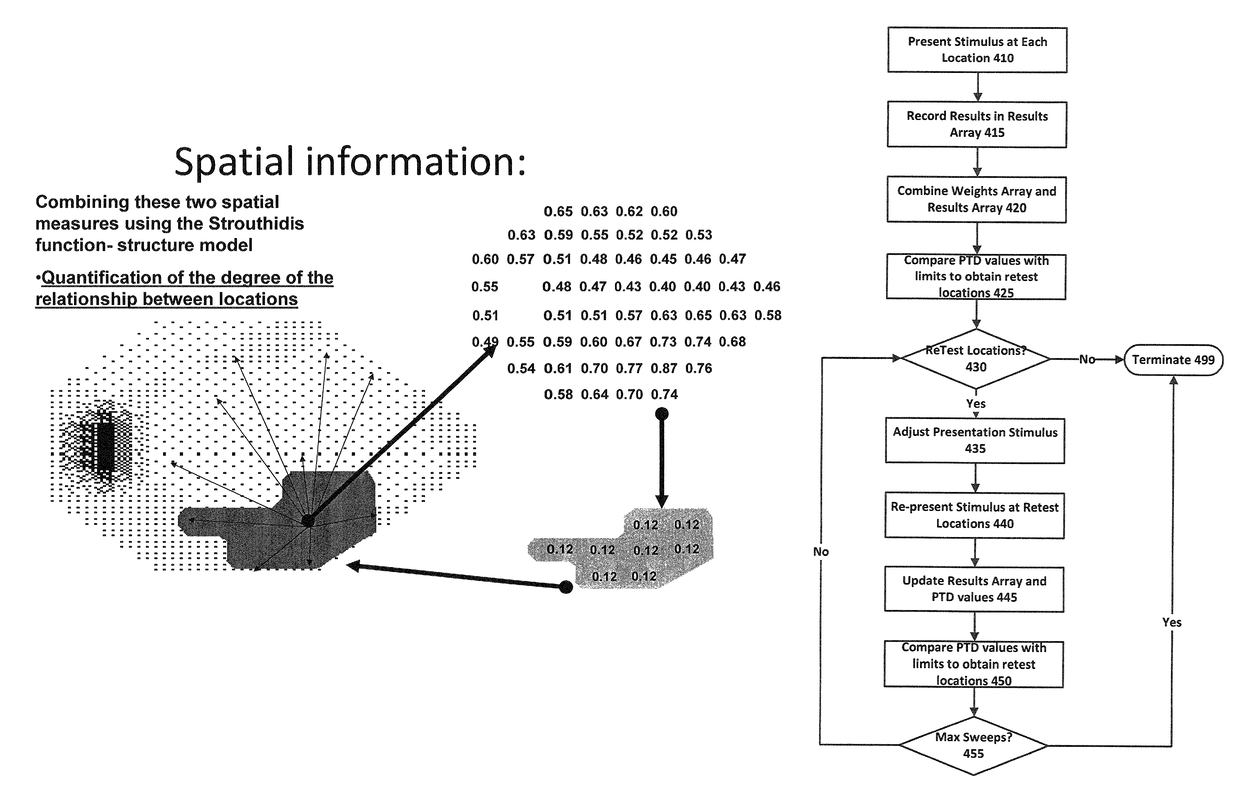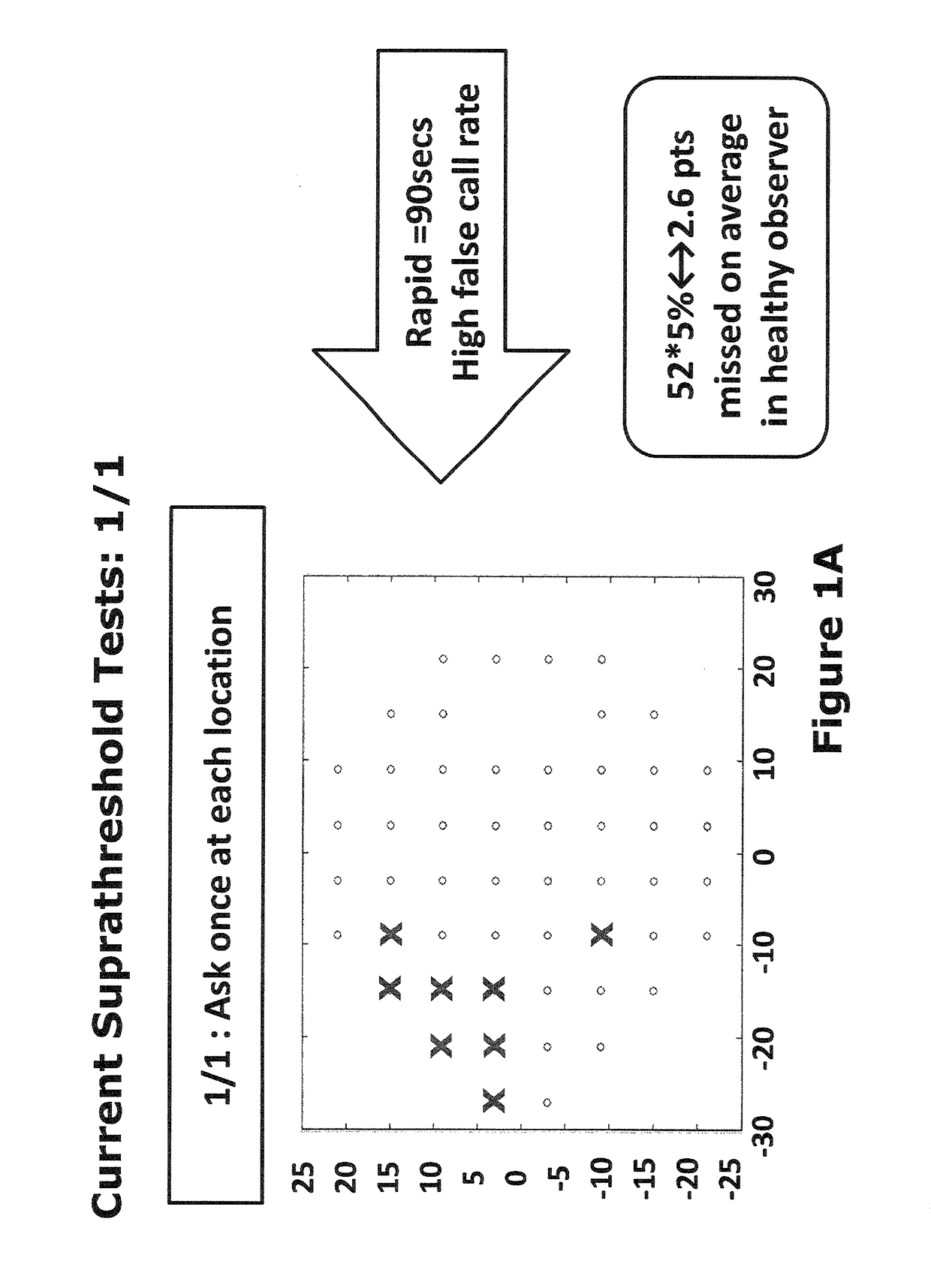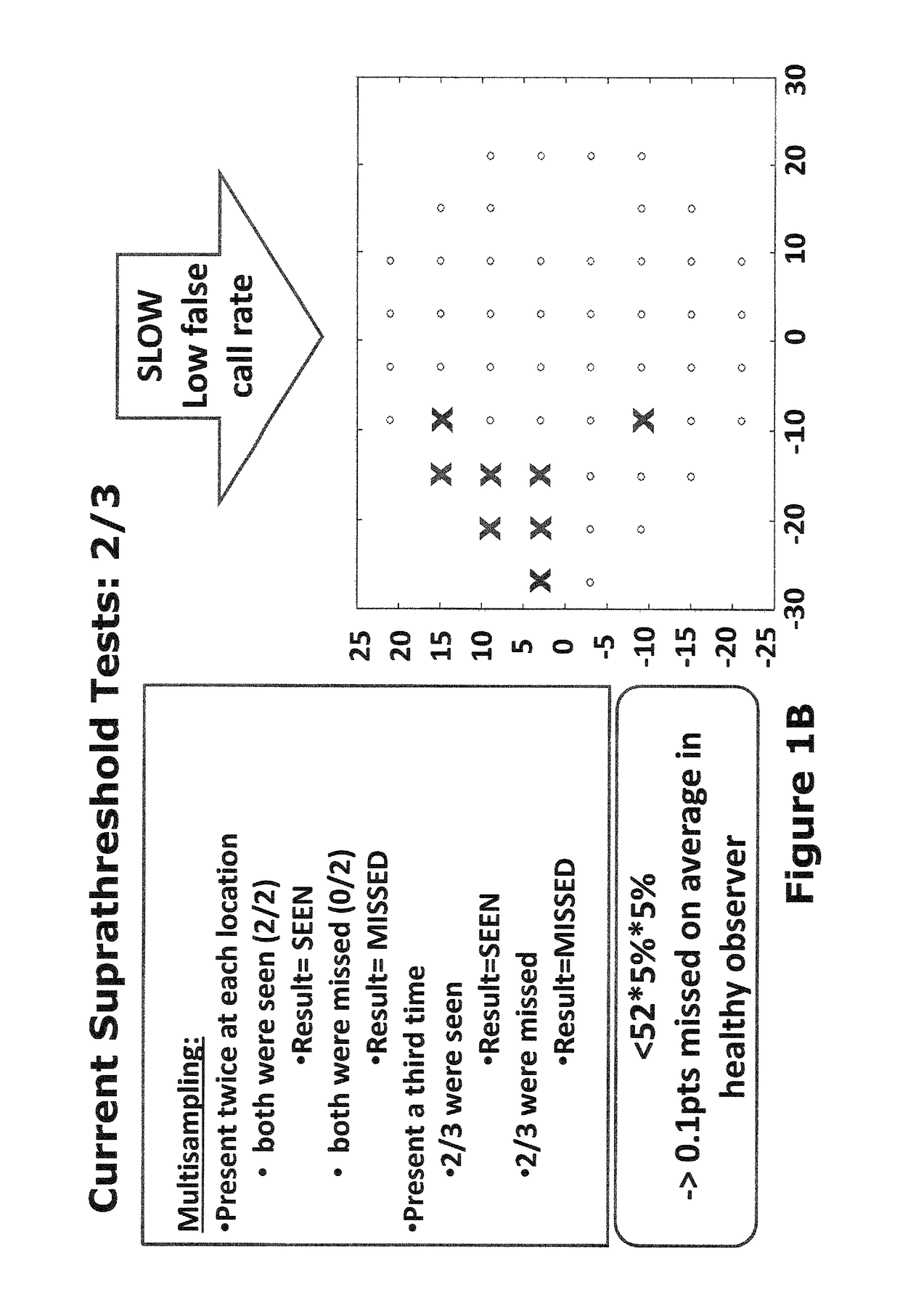Supra-threshold test and a sub-pixel strategy for use in measurements across the field of vision
a subpixel and test technology, applied in the field of suprathreshold test and subpixel strategy for use in measurements across the field of vision, can solve problems such as uncertainty, and achieve the effects of improving the high sensitivity end of the dynamic test range, increasing displacement, and improving precision
- Summary
- Abstract
- Description
- Claims
- Application Information
AI Technical Summary
Benefits of technology
Problems solved by technology
Method used
Image
Examples
Embodiment Construction
[0043]The present approach provides a suprathreshold visual field test in which cluster analysis is used for the retest strategy, in other words for determining which locations to retest and which locations not to retest. The cluster analysis incorporates physiological information concerning the spatial arrangement of optical nerve fibres across the retina. In particular, it is recognised that that if a given optical nerve fibre is damaged, then damage is more likely at test locations clustered on or close to the path of the optical nerve fibre. Conversely, if a given optical nerve fibre is healthy and working properly, this correct operation is likewise more likely at test locations clustered on or close to the path of the optical nerve fibre.
[0044]According to the present approach, locations in a healthy cluster are immediately eliminated from retest, whereas large points in a cluster that have been flagged as damaged during an initial part of the test sequence are isolated and re...
PUM
 Login to View More
Login to View More Abstract
Description
Claims
Application Information
 Login to View More
Login to View More - R&D
- Intellectual Property
- Life Sciences
- Materials
- Tech Scout
- Unparalleled Data Quality
- Higher Quality Content
- 60% Fewer Hallucinations
Browse by: Latest US Patents, China's latest patents, Technical Efficacy Thesaurus, Application Domain, Technology Topic, Popular Technical Reports.
© 2025 PatSnap. All rights reserved.Legal|Privacy policy|Modern Slavery Act Transparency Statement|Sitemap|About US| Contact US: help@patsnap.com



